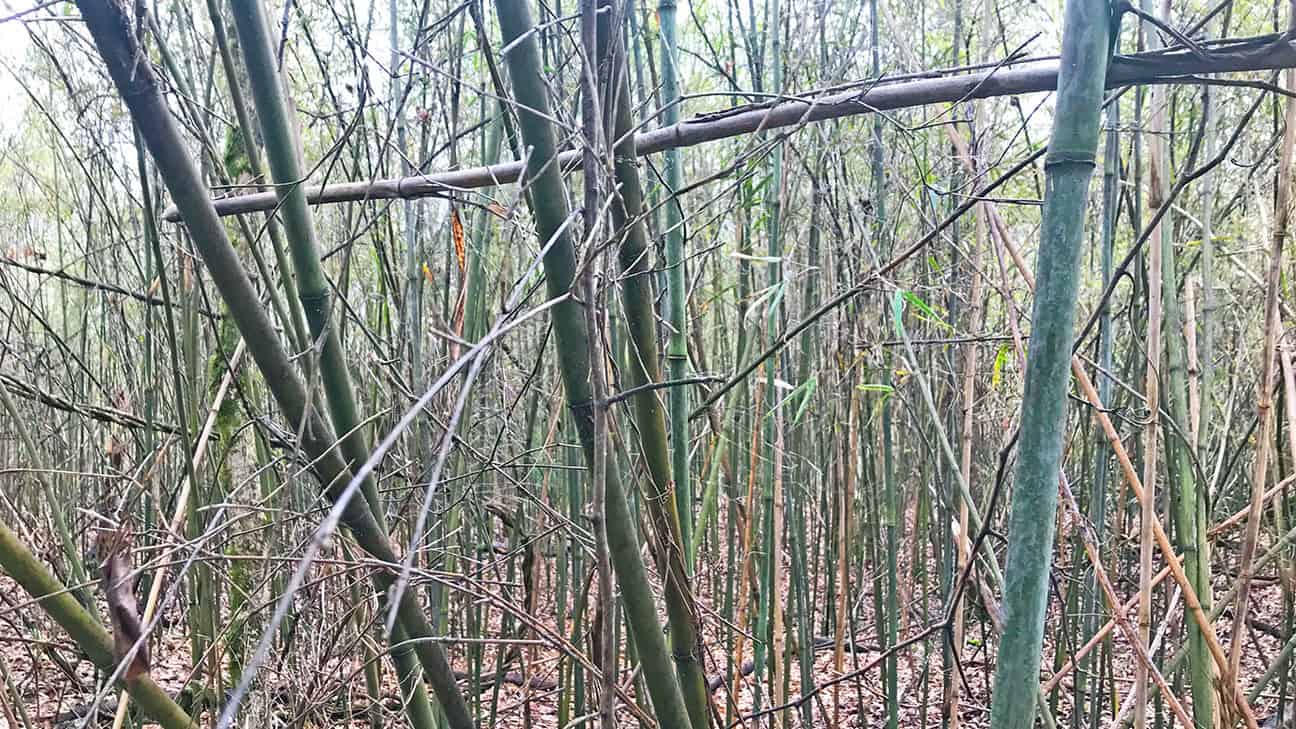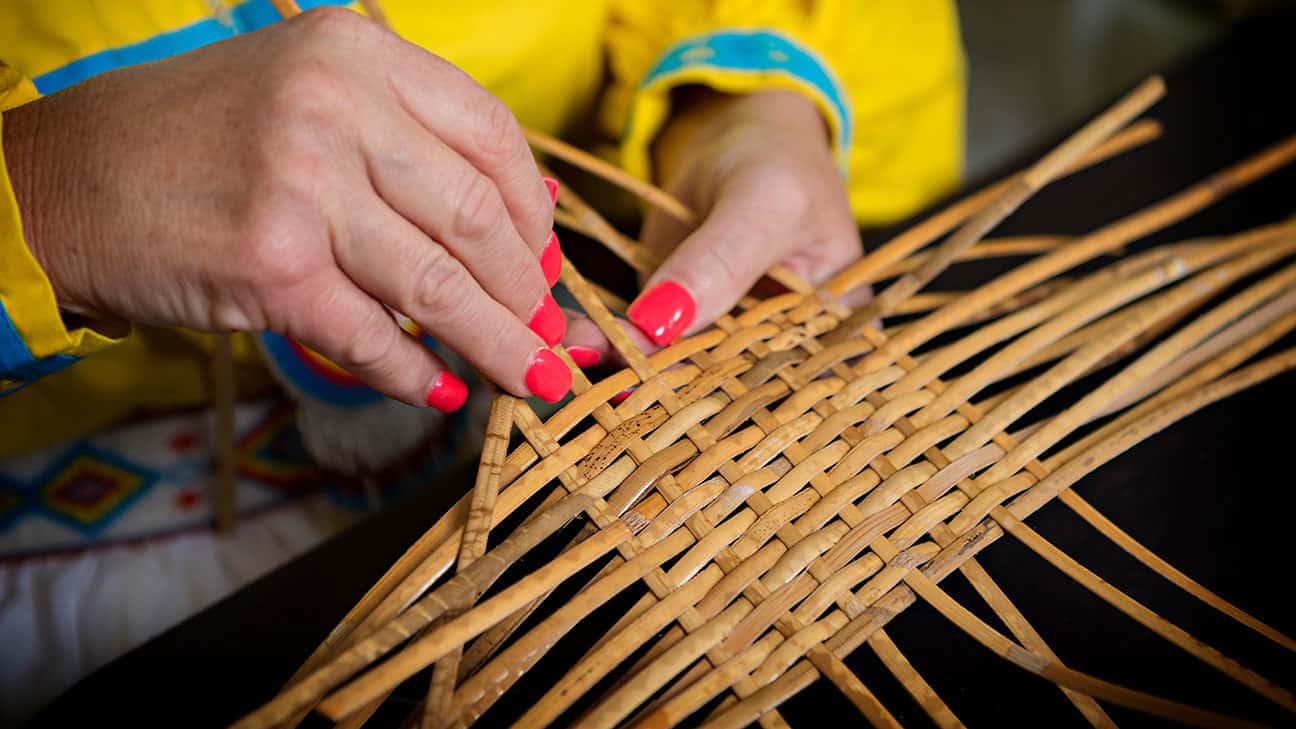Choctaw tradition is to pass down the skill of weaving from one generation to another. Women were the primary weavers in the Choctaw culture for generations. Grandmothers, mothers and aunts would teach younger women of the family how to weave. After the Removal to Indian Territory, however, European influences on social structure and traditional gender roles impacted Choctaw life. Modifications were necessary to protect the passage of traditional knowledge and skills. Today, you will see both female and male weavers as a result of these changes. Basket weaving continues to be a valuable art among our people.

Where a Basket Begins
Uksi, or river cane, is a semi-aquatic grass native to the southeastern United States. It is the main component of traditional Choctaw basketry as well as some Choctaw weapons and other cultural arts.
Large cane breaks flourished along the riparian zones of the Choctaw homelands in modern day Mississippi, Alabama and Louisiana. In Oklahoma, river cane can be found along the streams and rivers in the southeastern portion of the state. After the Removal and relocation to Oklahoma, Choctaws were able to carry on the tradition of basket weaving because of the availability of river cane.
Today, Oklahoma Choctaw basket weavers continue the tradition of river cane basketry, but they face growing difficulty in finding healthy stands of cane. Agricultural and urban development of lands has greatly reduced the amount of river cane growing in Oklahoma. Concerns about water rights, climate change and other environmental factors further threaten to impact the traditional art.

The Roots
Today’s Choctaw baskets, or tvpishuk, come from a line of well over 100 generations of Southeastern tribal weavers. For centuries, the Choctaw people have been noted for our beautiful and utilitarian river cane basketry. Baskets were an important part of Choctaw life because they sorted and stored food and goods for the community as well as transported goods to the market for trade with Europeans as they entered the Choctaw homelands in the late 1600s.
Early Choctaw baskets were noted as masterpieces. Some were woven so tightly they could hold water. Our ancestors also used baskets as trade goods to barter for a wide variety of European items. As they faced removal from the homelands, our ancestors carried baskets along the Trail of Tears and Death into Indian Territory, now the state of Oklahoma. Once settled in Indian Territory, our ancestors were able to continue the art of basketry using the cane available there.
Each time basket makers locate and harvest cane, they begin a lengthy and skilled process to transform it into a basket. Mature cane approximately six feet tall is harvested, and the maker uses a small, sharp knife to divide the cane into long sections and peel the outer skin of the cane into thin strips. A seasoned maker can normally get four to six usable strips from each piece of cane.
Patterns
Choctaw baskets incorporate a number of different patterns. Some of the most common are the traditional diamond, half-diamond and stair step. These shapes allude to the reverence for nature and importance
of the diamondback rattlesnake in Choctaw culture. Other types include “x” or “+” shapes that indicate the four directions or the sacred fires that burned in the villages of the past.
The Art of Weaving
Once cane has been stripped it is ready for dyeing. The most traditional dyes are made of plant matter, such as walnut hulls, tree bark and tubers. Modern weavers, however, often use commercial dyes to incorporate a wide variety of colors into their baskets. Whether traditional or commercial, dyeing involves soaking the stripped cane in heated liquid dye until it is the desired color. Once dyed, the cane is set aside to dry. Cane that will not be used immediately is rolled into tight coils for storage.
Most rectangular or square baskets start at the bottom. The pattern is counted out as the moistened cane strips are woven tightly together. Once the bottom of the basket is complete, the weaver folds the cane upward to begin the sides. When the sides are finished, the weaver wraps the remaining cane along the top edge of the basket and finishes it with an additional piece of cane wrapped tightly to hold all the pieces in place and create a finished look. Handles may be added at this point.